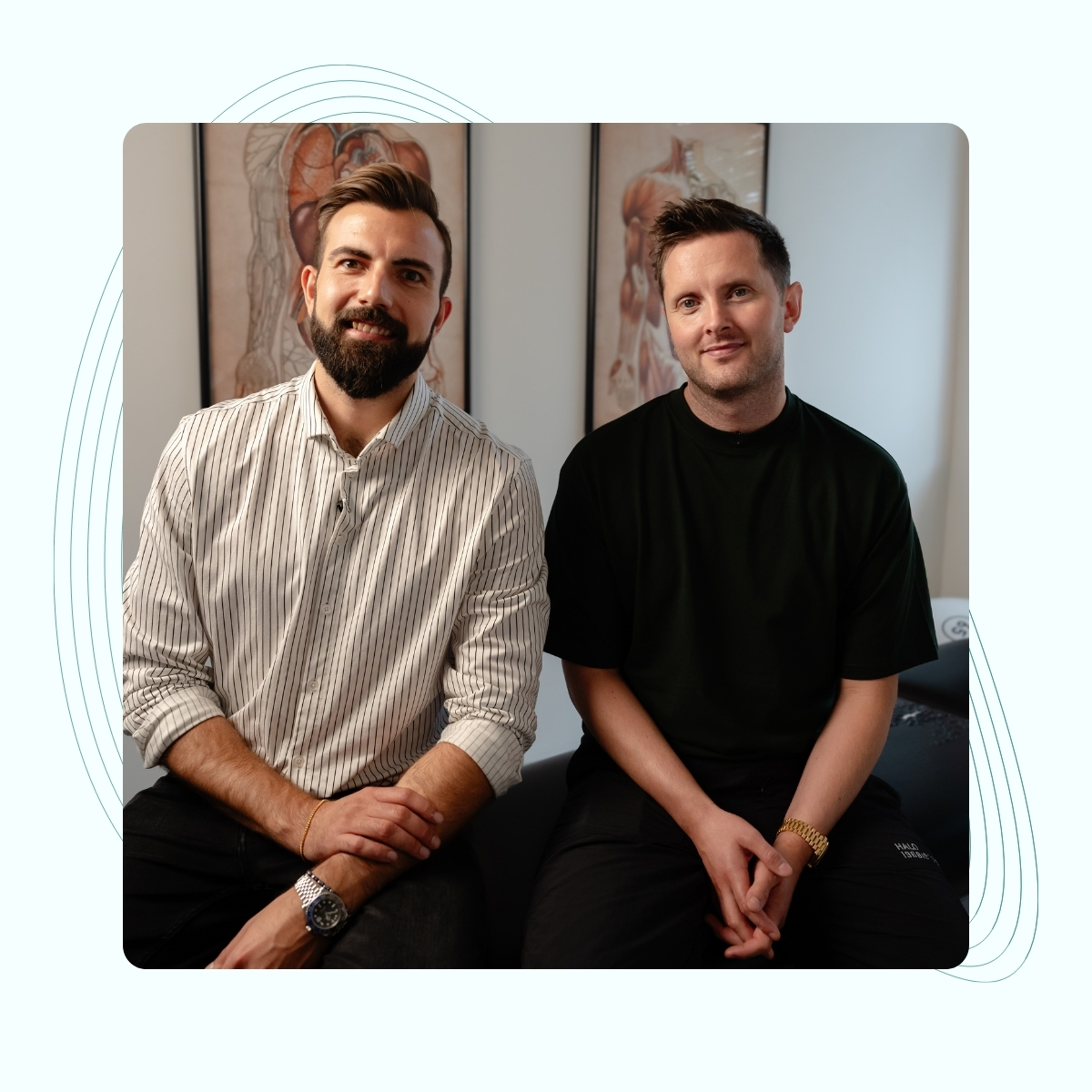We're offering
Physiotherapy
Physiotherapy is one of our core services. Learn more about why it matters.
Physiotherapy treatment
Physiotherapy is a treatment approach that examines and works with the body as a whole, focusing on the musculoskeletal system. Any issue within the body’s internal systems is often reflected through muscular or skeletal imbalances. In our approach to physiotherapy and osteopathy, we always consider the full medical history, body type, and areas with restricted movement. Treatment is never based on symptoms alone.
Physiotherapy as a form of treatment
Throughout human history, people have treated the body.
Since the time of Hippocrates, injuries and pain have been treated using massage, manual techniques, and various forms of physical care.
As orthopedics began to develop in the eighteenth century, different treatment machines were introduced. These played a key role in the evolution of physiotherapy. In 1813, physiotherapy was formalized in Sweden, combining joint manipulation with physical exercise.
The Swedish term for physiotherapist is sjukgymnast, a word rooted in the tradition of therapeutic gymnastics. In 1894, four nurses went on to establish the Chartered Society of Physiotherapy.
The first schools of physiotherapy, called The School of Physical Therapy, were founded in the following years in New Zealand and the United States.

How physiotherapy affects the musculoskeletal system
Physiotherapists specialize in treating injuries and dysfunction in the musculoskeletal system. This system is one of many subsystems within the human body.
The body is organized in functional hierarchies, where the central nervous system is dominant over the others.
The central nervous system (CNS) includes the cerebrum, mesencephalon, metencephalon, and myencephalon, which together form the brainstem.
From there, the CNS continues through the spinal cord, running from the neck down to the sacrum. The CNS controls both the somatic nervous system, which governs voluntary movements, and the autonomic nervous system, which operates involuntarily and regulates essential life functions.
Below the CNS in this hierarchy is the organ system, which includes the digestive system, hormonal system, circulatory system, lymphatic system, immune system, and others. Next comes the musculoskeletal system, where dysfunctions in other systems often present themselves as pain or injury.
In this approach, osteopaths focus on treating the central nervous system and organ systems, while physiotherapists primarily work with the musculoskeletal system and often the somatic nervous system.
Not sure if physiotherapy is right for you?
Book a free 15-minute consultation — no strings attached
Book your free screening
What conditions are treated with physiotherapy?
We have many years of experience and training in treating sports injuries, work-related pain, and overuse injuries.
We can help you with the following:
Neck and back pain
Pain in the shoulders, neck, and back often stems from weakness and instability in the core muscles.
Knee pain
Rehabilitation of the knee (instability, weakness, stiffness, runner’s knee, jumper’s knee). Knee issues often develop as a result of dysfunction in the pelvis or ankle. A combination of stability training, mobility exercises, and strength work in those areas followed by focused knee training is key to long-term improvement.
Dizziness
Dizziness can be caused by misalignment in structures connected to the neck and shoulders. Improving mobility and using targeted exercise therapy for restricted areas helps reduce tension in these overloaded structures.
Shoulder pain and physiotherapy
Rehabilitation of the shoulder (instability, weakness, winging shoulder blades, forward-rounded shoulders, frozen shoulder). Shoulder pain can originate from many areas of the body, since the muscles involved in shoulder stability often connect to the pelvis, spine, neck, and more.
Whiplash
Whiplash often leads to weakness and instability in the neck muscles and connective tissue. Physiotherapy is a valuable tool for restoring strength and function in these areas.

Which conditions do we see most often?

Back pain

Facet joint syndrome
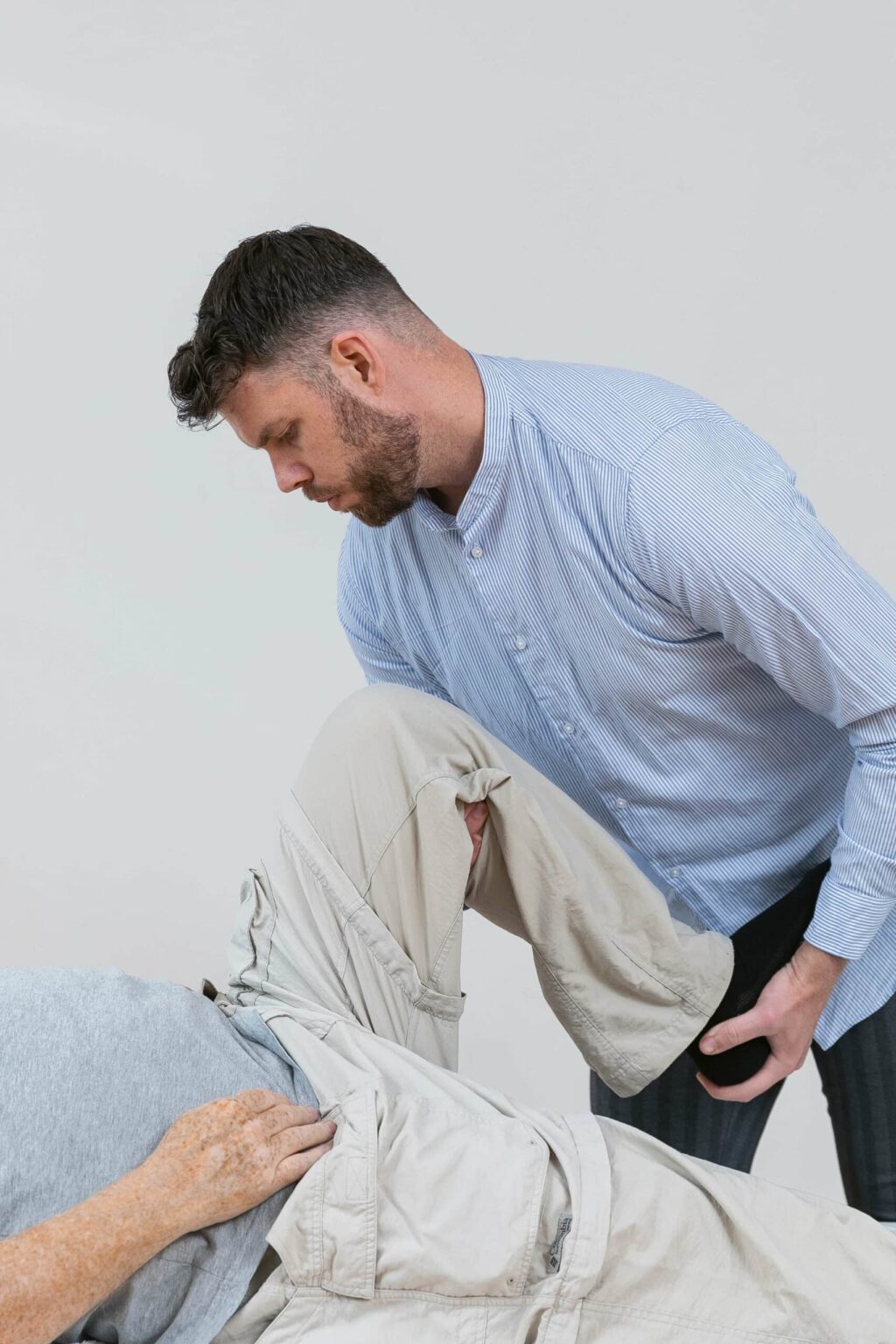
Jumper’s knee
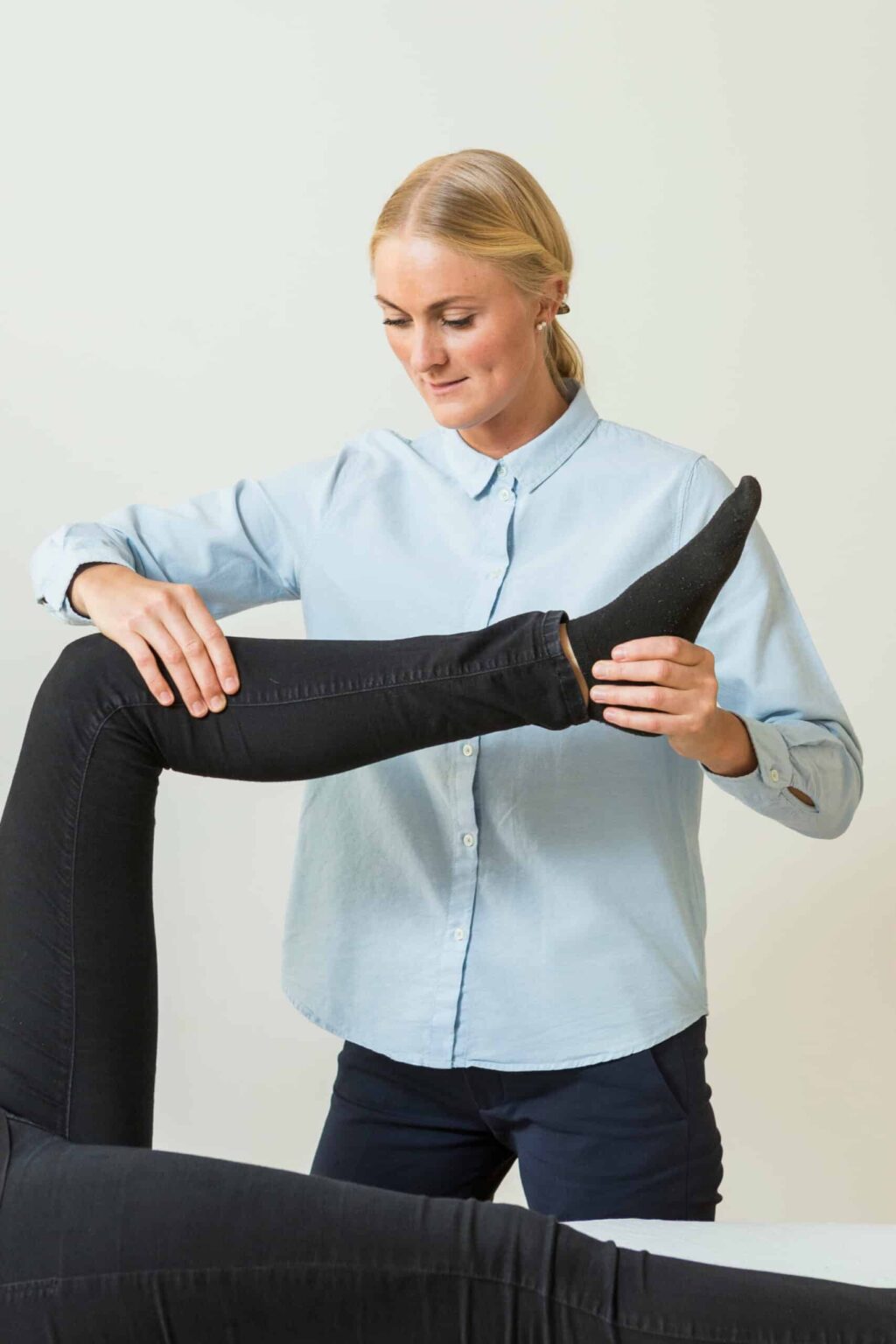
Heel spur

Kidney stone

Endometriosis
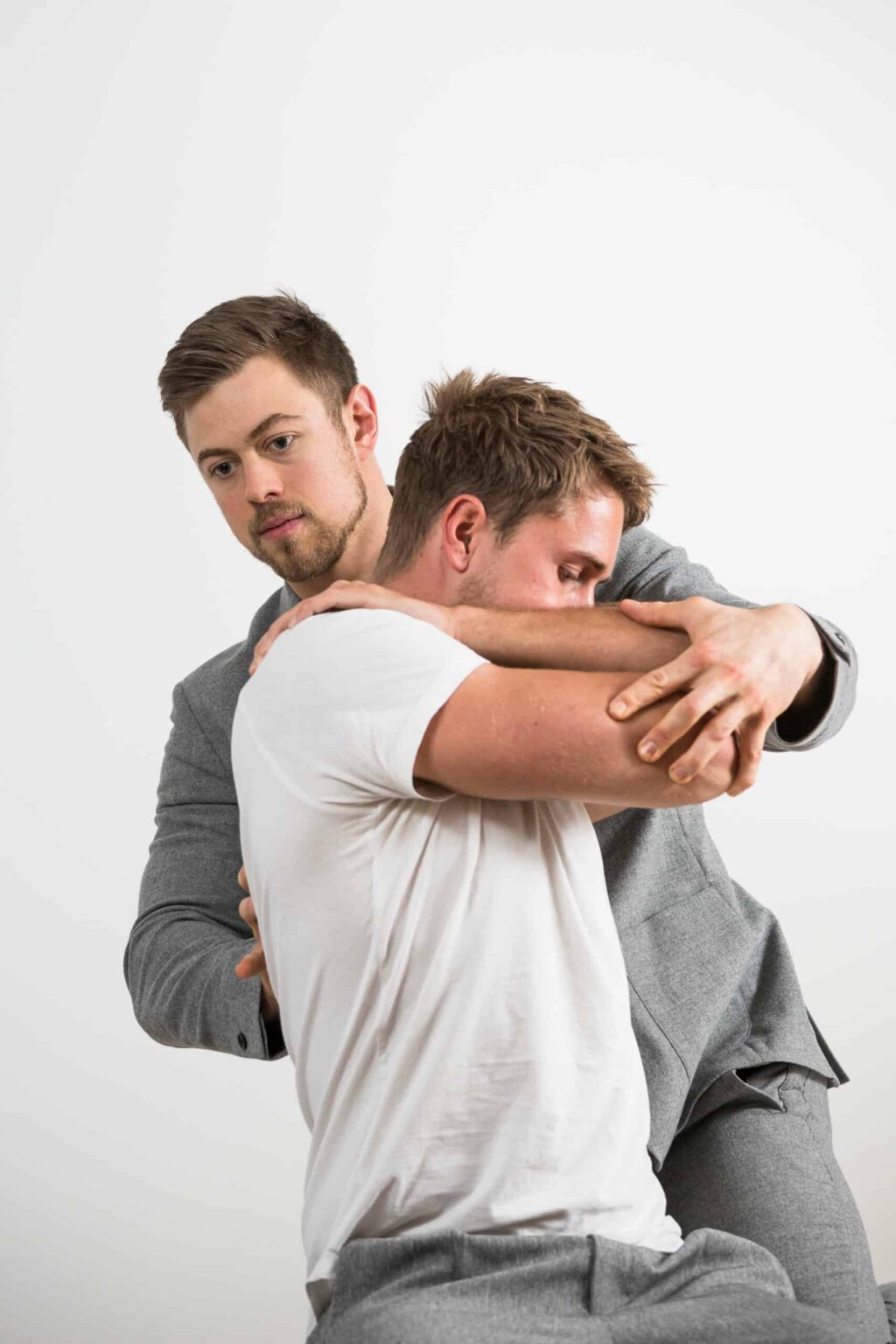
Muscle pain
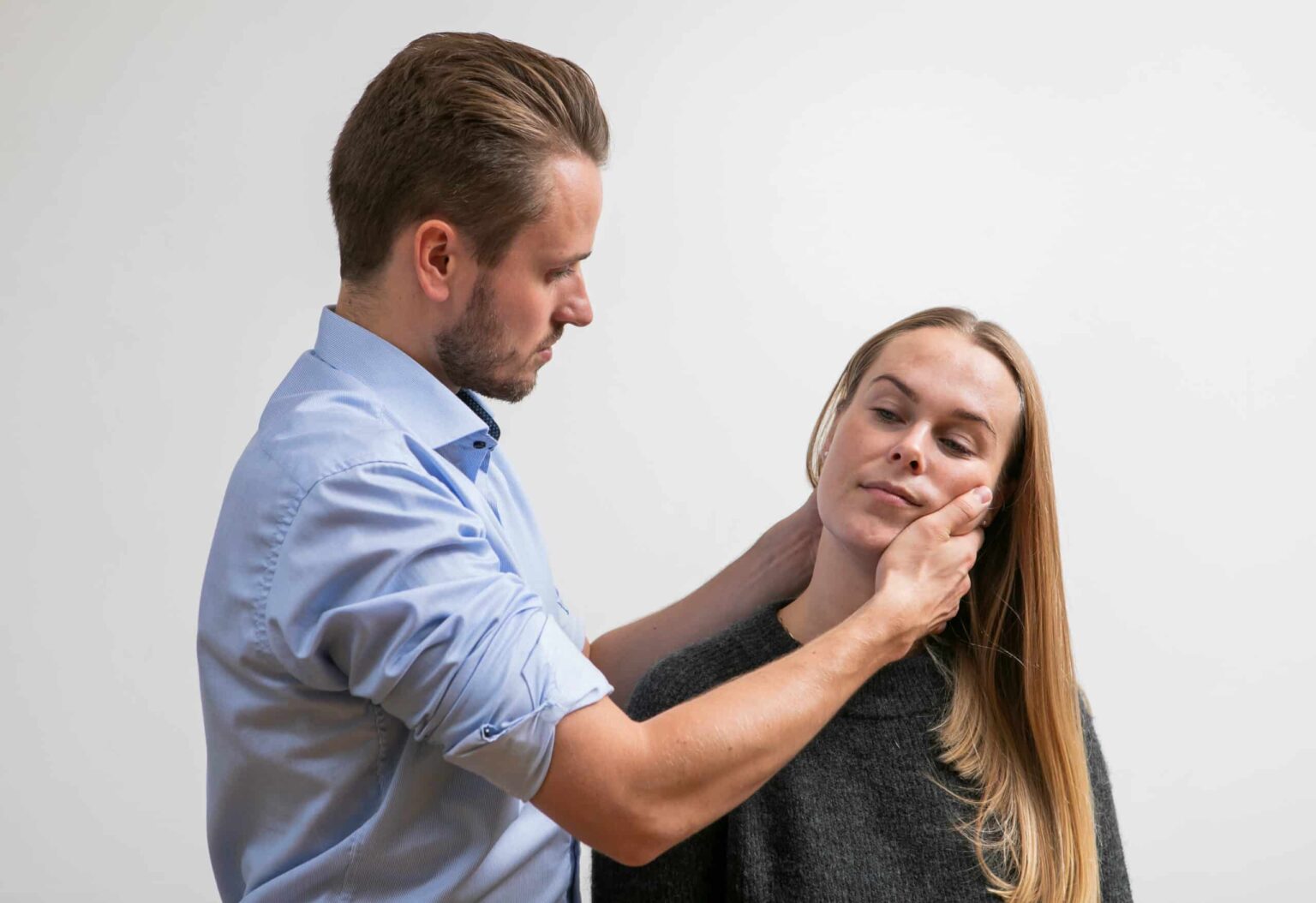
Migraines
Didn't see your specific issue listed?
Physiotherapy rehabilitation for disc herniation
Rehabilitation of the back (instability, weakness, disc herniation, sciatica, scoliosis, spinal stiffness, lower back locking, flat lumbar curve, or excessive arching). Core and strength training help the back muscles support the spine in the most optimal positions.
Buttock pain and physiotherapy
Pain in the gluteal region can be caused by tight muscles or muscle weakness. Physiotherapy can address both through targeted treatment and exercise.
Rehabilitation for hip and pelvic pain
Rehabilitation of the pelvis and hips (instability, weakness, pelvic misalignment, tight hip flexors, stiffness). Physiotherapists are trained to identify the underlying causes and develop tailored rehab plans to restore proper function.
Pregnancy-related discomfort
Pregnancy often brings stiffness and reduced mobility. Physiotherapy can relieve discomfort and support the body’s changing needs throughout pregnancy.
Rehabilitation after sprains
Rehabilitation of ankle and foot issues (instability, weakness, sprains, stiffness). Stability training for the ankle, foot, knee, and hip plays a key role in both treatment and injury prevention.
Experts in muscle strains
Muscle strains and tears reduce the strength and function of the affected fibers. A physiotherapist can locate and treat the specific areas that need targeted strengthening for full recovery.

Cervical disc herniation and whiplash
Rehabilitation of the neck (instability, weakness, stiffness, misalignment, nerve-related pain). A physiotherapist is trained in strength and exercise therapy for treating neck conditions.
Experts in headaches
Headaches can sometimes be caused by poor posture or improper working positions. A physiotherapist can help address these issues effectively.
Tennis elbow and golfer’s elbow
Rehabilitation of elbow and hand problems (instability, weakness, stiffness). Misalignment and overuse in the elbow and hand are conditions that physiotherapists are well equipped to treat.
Neck pain and acute stiffness
Physiotherapists are specialists in identifying and treating the underlying causes of neck pain and stiffness using targeted, hands-on care and movement therapy.
Our approach to physiotherapy
Physiotherapy focuses on the musculoskeletal system, while osteopathy addresses the other systems of the body.
Together, this creates a fully integrated approach to treating a wide range of injuries and conditions.
In many cases, treating only the musculoskeletal system is not enough. Other systems — including the craniosacral system, nervous system, organ system, circulatory system, lymphatic system, and psychological factors — are often involved when pain or dysfunction appears.
By addressing all of these systems, physiotherapy combined with osteopathy becomes significantly more effective. This is why we aim to bring together the strengths of both approaches to create a powerful foundation for rehabilitation and recovery.

What happens during a consultation?
A physiotherapy consultation typically lasts around 45 minutes and includes a thorough interview, clinical examination, and testing of the musculoskeletal system.
The purpose is to identify the root cause of the musculoskeletal symptoms presented by the client. Based on this, the practitioner creates a treatment plan designed to support the body’s natural ability to heal itself.
The treatment plan may include hands-on manual therapy, massage, exercise therapy, or rehabilitation training.
The patient may also be referred to an osteopath or another healthcare specialist if the root cause lies outside the musculoskeletal system.
If you have questions or are unsure whether physiotherapy is right for your condition, feel free to reach out to our team.
Our physiotherapists continuously advance their expertise in both clinical treatment and patient guidance. This includes tailored advice on effective exercises, lifestyle adjustments, or nutritional changes.
We began with a strong foundation in physiotherapy, and today it remains one of the core elements in everything we do.





